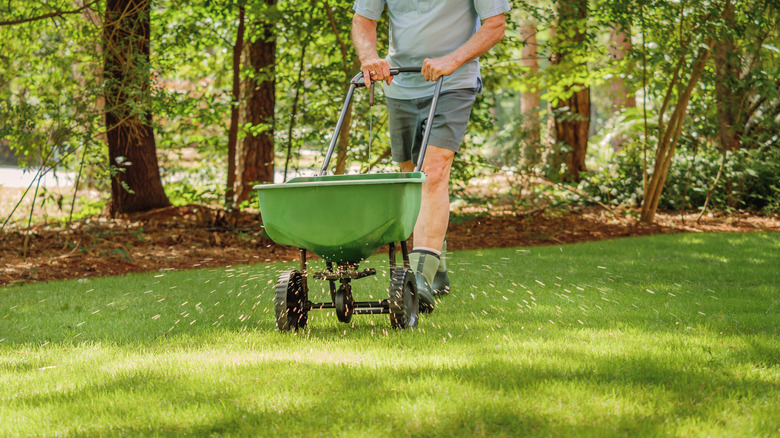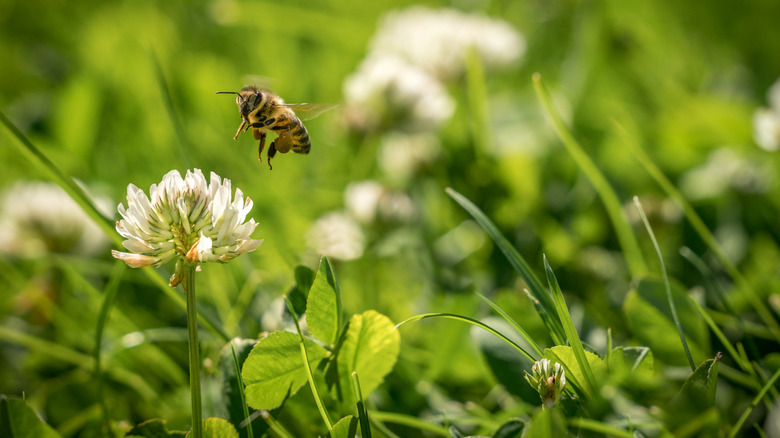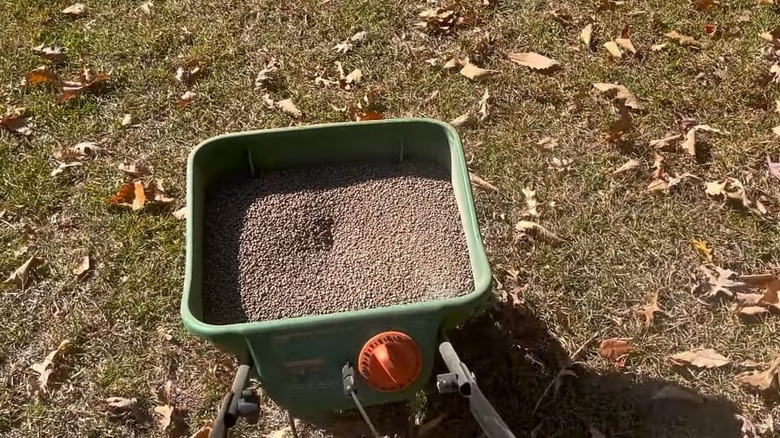The 'Weed' That'll Make It So You Need To Fertilize Your Lawn Less
We may receive a commission on purchases made from links.
Clover, a humble inhabitant of backyards, often goes unnoticed or, worse, banished as a lawn weed. But let's pause and rethink the narrative around this modest green hero. Unexpectedly, a lawn shrouded with clover isn't as much a sign of neglect, but instead a promise of a healthier, more vibrant lawn. And one that, ultimately, will require less fertilizing.
The clover is like a garden gnome who works quietly behind the scenes, never asking for credit or a reality TV show titled "Keeping Up with the Clovers." If your lawn has clover strutting its stuff, sit back, relax, and let the green wizardly unfold. The main magic of clover lies in resolving nitrogen issues in the soil. You see, Mother Earth envelops us in this beautiful cuddle of air, where nitrogen gas accounts for 78%. Unfortunately, plants can't directly benefit from this nitrogen bounty. Flexing its symbiotic muscles, clover teams up with rhizobium bacteria in root nodules to convert atmospheric nitrogen into a form your lawn can graze on.
What's even more impressive? A thriving thicket of clover can transform 100 to 200 pounds of nitrogen into useful ammonia annually (per the University of Georgia) while also maintaining a healthy, verdant look. And with this perpetual nitrogen fixation, your wallet can heave a sigh of relief, for you no longer have to keep fertilizing your lawn as often. Not to mention, you save several sweaty hours under the hot sun while trying to perfect your lawn.
Clover in lawns is more than just nature's fertilizer
Clover isn't just Mother Nature's gift to your grass as an inexpensive, natural fertilizer; in fact, it is a subtle green lifesaver with a multifaceted presence. Another of its botanical charm lies in its nectar, which has the allure for friendly insects like bees and parasitoid wasps. Bees, ever-so industrious, assist with pollination, while the parasitoid wasps act as de facto backyard bouncers, preying on harmful bugs like aphids. It's about crafting a balanced, diverse ecosystem right in your backyard. And the addition of white flowers tinged with pink provides just the right amount of color pop, turning your lawn into Van Gogh's canvas.
Possessing the grit of the ancient Spartans, clover stays resilient and evergreen even under the harshest conditions, thanks to its deep, pioneering roots. This all-weather, all-terrain trooper also thrives freely in the face of partial shade or full sun. Clovers also outcompete and smother other broadleaf weeds, so replace your back-breaking weekend routine of bending over those pesky green intruders with the image of a soothing ground cover. And as if it wasn't doing enough already, clover grows and spreads swiftly, covering those bald and thin patches in your lawn quicker than a hair transplant. As a bonus, clovers serve as nature's aerators, being so gracious as to decompose and leave organic deposits in the soil while attracting earthworms that keep your soil loose.
How to seed clover over grass
Debut your clover-seeding escapade in spring post-frost when Mother Nature provides the ideal warmth for germination. Late summer or autumn sprinkling is an option, but winter might play the antagonist against your "clover stars." But again, what type of clover is best for lawns? White clover enjoys the most popularity in North America. Yet, the unassumingly tough, weed-and-frost-resistant strawberry variety refuses to be sidestepped. For a bolder, taller choice, the red clover will rise triumphantly. And if you fancy a blend of elegance and practicality? Meet the low-growing microclover, which gracefully intertwines with your existing turf, creating a dense, pleasing landscape resilient to foot traffic. The seed volume required hinges on the desired clover dominance.
Trim your lawn lean, then rake the turf for that needful seed-soil connection. You can coax compact soils into submission using a core aerator, available for rent at local home improvement stores (and possibly accompanied by nuggets of gardening wisdom). Next, broadcast those treasured clover seeds by hand if overseeding a smaller lawn. A seed spreader like the Scotts Elite Spreader on Amazon will suffice for sprawling green kingdoms. Mixing the seeds with sand or compost helps avert any dispersal drama. You should keep the soil moist until the seeds germinate, lest a drought ruins your ingenious artwork. As for how fast clover grows from seed, expect two to three days in balmier seasons and seven to 10 days off-season.


